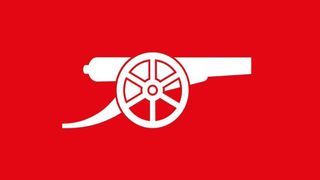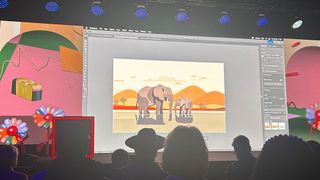As any self-respecting character designer knows, at the core of a successful creation is personality. A character doesn’t have to be likeable – in fact, they’re often more intriguing when they’re not – but there has to be a spark there that transcends lines on a page. This rule stands firm irrespective of personal style, and an exciting new crop of character artists are reaping the rewards of breathing life into their creations.
“You can’t just draw characters. You have to imagine them; you have to create them,” proposes Matt Macabre – also known as Matt B, and eight bit, whose portfolio includes work for Diesel, PlayStation and Ben Sherman. “It’s not just what they look like, but who they are,” he says. “Their distinctive traits, their bad habits – they’re important. These seemingly insignificant details collectively form clues as to where these characters come from.”
For eight bit, whose illustration heroes include such luminaries as Dr Seuss, Arthur Rackham and Richard Scarry, beauty lies in imperfection. “I tend to make my characters ugly,” he admits. “I always loved the close-ups in Ren & Stimpy cartoons when you’d see the crusty eyelashes and boils. Pretty probably sells more units, but ugly is much more fun to draw,” he grins. “You can often expect sunken eyes and crooked teeth from me, along with spindly-fingered hands and bad posture. In life, the people with scars and weathered faces are the ones with the stories to tell.”
Manchester-based Nick Hamilton, AKA Hammo, argues that attention to detail is essential for getting across personality in characters. “The work doesn’t have to be intricate, but it does mean thinking about seemingly insignificant things, such as the seams on clothing, or the shadow from a pair of turn-ups,” explains the University of Central Lancashire graduate, who counts TBWA, K-Swiss and Don’t Panic among his client list.
As a child, Hammo was obsessed with the comic work of Jamie Hewlett and Charles Burns. “My early characters were defined by big, blank, circular eyes,” he recalls. “They’ve since developed pupils and I’ve messed around with various eye shapes.” His creations tend to be young and adventurous: “Gap-toothed and freckly, clad in shorts and socks, with untied shoelaces,” he reels off. “They have big ears too; maybe that’s me compensating for my little ears. My characters are often found in duos, isolated from the rest of the world in dystopian landscapes and robotic futures. It might well be because I work alone, from home.”
It’s not uncommon for character artists to draw on personal experiences, hopes and dreams when fleshing out their creations. “A lot of my human characters, I’ve come to realise, are me in different guises,” admits Brighton-based Jes Hunt, who’s just completed a Masters in Illustration and Animation at Kingston University. “I like female characters with a bit of melancholy and loneliness to them, but I also like to inject humour, whether it’s a knowing facial expression, or something more ridiculous,” she adds. “Old photographs give me ideas, and I could sit and stare for hours at the linework of some of my favourite illustrators, such as Tove Jansson, Tomi Ungerer, McBess and Bjrn Rune Lie.”
Rather than overcomplicate the design, Hunt keeps her characters’ faces as simple as possible, and they all share the same basic facial features: “I spent a long time honing them down to the simplest ingredients,” she reveals. “I always use dark semi-circles for eyes, as I like the way it gives the characters a bit of anonymity.”
With clients such as Red Bull, 55DSL and the BBC under his belt, London-based Tom Hovey, AKA Twisted Loaf, draws inspiration from his daily commute on the tube: “London is full of freaks,” he states. “We have some of the best and worst fashion trends on show, so it’s easy to be inspired. Injecting personality is the essence of character design, for me. They have to live and breathe,” he adds. “I want to be mates with everyone I have ever drawn, although I’m shit scared of most of them.”
Like eight bit, Twisted Loaf says he finds the dark side infinitely more fascinating, and he makes up one quarter of “macabre” illustration collective The Dead Sea Mob. “My natural aversion to being sold everything by unrealistically good-looking models makes me want to explore the beauty within the beast,” explains the illustrator, whose house backs onto a cemetery. “The more characters I draw, the more I realise that they’re people I want to be, are covered in tattoos that I’d like to have, or are with girls I’d like to cuddle.”
While the dark underbelly of society feeds the fertile imaginations of some, Dutch duo LouLou & Tummie is proud to fly the cute flag: “All our characters are naive, and we hardly ever draw angry characters; they’re mostly all happy,” insists LouLou (Laurens Schellekens). “Many of them have a dumb, blank stare, or just a basic cute smile. We use freckles, too.” Bright, geometric shapes, robots and monsters with short legs and long arms crop up often in the Tilburg-based couple’s work – a style that’s won them a host of commissions from Vodafone, Virgin, IBM and more. Inspiration comes from all manner of ragtag sources: “We’re influenced by other creators, toys that we find at flea markets, old books and rubbish lying in the street,” continues Tummie (Chantal Knook). “We like to make our characters a bit silly, whether they have one eye, six eyes, or are boss-eyed; with dumb looks on their faces.”
Simplicity is crucial for LouLou and Tummie, who enjoy the restrictions of the stripped-back aesthetic: “We used to create gradient-heavy work, but it felt like we were cheating,” admits Tummie. “A gradient is an easy way to intensify an illustration, or make shapes or parts stand out, but now we have to revise shapes and colours to make it pop. It’s a bigger challenge to create something stripped from all unnecessary detail, but to still give it the same intensity, and tell the same story.”
LouLou and Tummie exemplify the popular trend for back-to-basics, simple, geometric character art, but what other styles and movements are pushing clients’ buttons? All the artists we’ve spoken to here agree that, as with any creative discipline, it depends on the application.
“The characters I’ve just finished for web and graphic design agency Creative Spark have all been bright, bold and cartoony, whereas the TBWA (creative company) work was kind of grittier and dark,” explains Hammo by way of example. “Right now I’m drawing some fairly conventional comic book figures, in a Dave Gibbons vein, for a project with an American client.”
Suffolk-based freelancer Joel Millerchip, AKA Mister Millerchip, developed his signature black-and-white style based on real-life observations in his sketchbook. “The main characteristics I use are flat noses and curly hair, which I started incorporating after I found out the name ‘Crispin’ meant ‘one with curls’ when researching names for my unborn son,” he grins. High cheekbones, a double chin, facial hair and tattoos make the list of features as well. “I always finish character designs off with a good pair of winkle-picker brogues to add a touch of Terry Thomas class,” he explains.
Jes Hunt identifies bold, bright shapes and colours as a current trend: “Whereas a few years ago, everyone wanted a more folksy look,” she recalls. “There’s also a whole surrealist and absurdist movement happening that I’m really into at the moment,” she adds, although she doesn’t see herself as part of that scene, or any other.
Matthew Hodson, better known as his Matthew the Horse alias, certainly takes the artist-character relationship into the realm of the surreal: “I try to behave like the character,” he declares, “and be uninhibited and playful while drawing. I make noises out loud at my desk to remind myself who this character is supposed to be, like a ventriloquist bringing a puppet to life – except I can move my lips and I don’t have a puppet. Is that a stupid analogy?”
Hodson’s long-faced characters have developed in his sketchbook over the last few years, and won him clients including the Guardian, The Economist and Converse. “They look a bit like rats, but aren’t supposed to be anything in particular,” he explains. “They usually end up looking stupid or deadpan. I haven’t used them as much as I’d like, but they’re not always suitable in a commercial context.”
Although arguably an exponent of the absurdist movement that Hunt highlights, Hodson shrugs off any such attempt to pigeonhole him: “I don’t know about any scenes. I live in Leeds. We eat a lot of chips,” he shrugs. “I haven’t used my characters much commercially, because a lot of them are bonkers: you’ll never see a man with tits on his chin selling cornflakes. Commercially popular character design seems to be cute, friendly and informal, which makes a lot of sense. I’ve got to stop drawing penises on things.”




